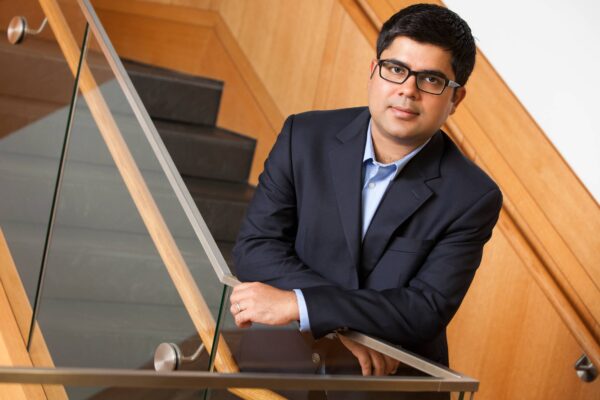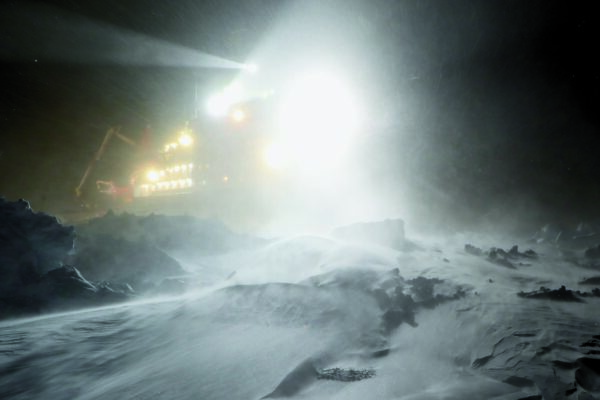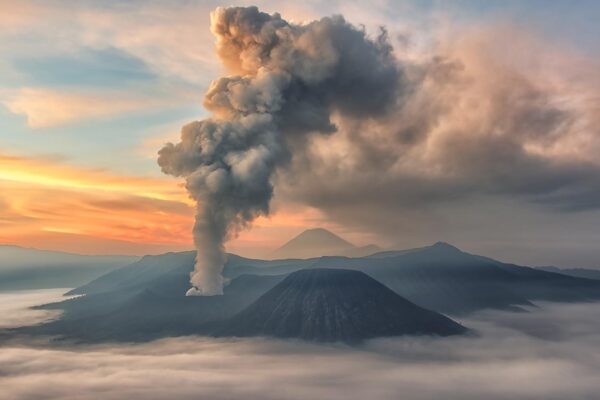Geoengineering, or large-scale manipulation of the climate by humans, has spawned sci-fi treatments aplenty, from supervillains trying to control the weather for their own ends to vivid imaginings of what future catastrophes might result from unsustainable environmental control. Rajan Chakrabarty, the Harold D. Jolley Career Development Associate Professor in the McKelvey School of Engineering at Washington University in St. Louis, takes a more nuanced view.
Chakrabarty and collaborators Rohan Mishra, an associate professor of mechanical engineering and materials science, and Lu Xu, an assistant professor of energy, environmental and chemical engineering, both in McKelvey Engineering, won a three-year $1.5 million grant from the Simons Foundation International to explore potential candidates for a geoengineering technology called stratospheric aerosol injection (SAI). SAI involves seeding small particles, or aerosols, into the upper atmosphere to offset global warming caused by human-made greenhouse gas emissions.
SAI is one pathway for humans to replicate the natural cooling effect observed after the 1991 eruption of Mount Pinatubo, a volcano in the Philippines. The eruption spewed 10-20 million tons of sulfate aerosols into the stratosphere where those particles reflected enough sunlight to cause a global temperature decrease of about half a degree Celsius in 1992.
Chakrabarty and Mishra already have worked together on analyzing the chemical and optical properties of particles in wildfire smoke, revealing that wildfires have a much larger warming effect than climate modelers thought. This new project would similarly inform climate projections used in SAI and geoengineering more broadly. Chakrabarty said models are currently missing key ingredients, including how particles that might be injected into the atmosphere will interact with solar radiation and ozone over time.
“Think about it like a dish you are preparing,” Chakrabarty said. “You have to consider what ingredients you’re putting in, how much of each ingredient, and how those ingredients will interact in the final meal. For SAI, our ingredients are particles, and we need to know what are their light scattering and absorption properties? What is their interaction with ozone? What happens if there are manufacturing defects in individual particles? These factors will all impact what happens when we put these aerosols in the stratosphere.”
Combining Chakrabarty’s expertise in aerosol optics and modeling, Mishra’s techniques for characterizing and optimizing material properties at the atomic scale, and Xu’s expertise in atmospheric chemistry and chemical kinetics, including ozone chemistry, the team will help scientists make sure that if SAI is deployed someday, it is as effective and safe as possible. They plan on compiling a database of optical and chemical properties for the most promising aerosol candidates, including considerations of size, composition, atmospheric interaction and aging processes. All these features can be readily incorporated into climate models to accurately assess the impacts of different SAI scenarios in modulating Earth’s temperature and the environment.
“Our ultimate goal is to help the scientific community work out the best candidates for SAI geoengineering,” Chakrabarty said. “We’re using the unique expertise we have here in McKelvey Engineering to explore the nitty-gritty details for top SAI candidates in terms of their material and optical properties, safety considerations and how the particles behave over time. Looking at these properties across bulk and atomic scales will provide critical information for future users, including geoengineers, climate modelers and aerosol manufacturers.”
This award is part of the Simons Foundation’s Mathematics and Physical Sciences division’s Solar Radiation Management (SRM) program. Chakrabarty, Mishra and Xu will participate in Simons Foundation activities along with fellow SRM awardees.
Originally published on the McKelvey School of Engineering website



